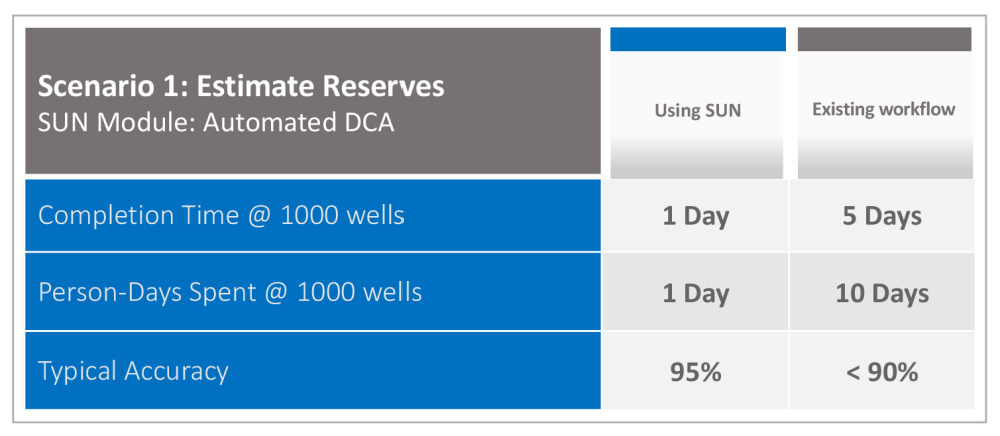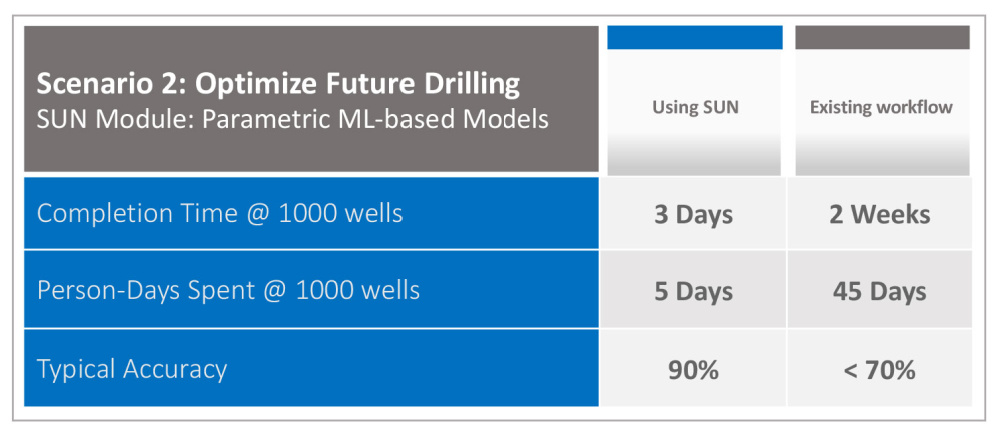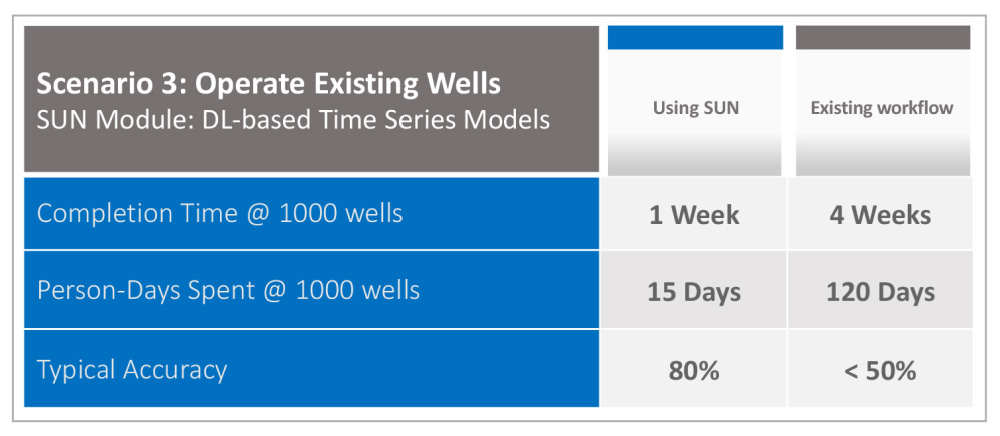Accurate Production Forecasting is Crucial to Effectively Manage Unconventional Assets
Unconventional oil and gas development has been accelerated over the past two decades in response to the continuous growth in global energy demand. Despite the challenges that oil and gas are facing in the overall energy mix (namely associated GHG emissions and net zero goals), the dependency on unconventional fossil fuels is expected to remain strong for the foreseeable future. Among all different factors, accurate production forecasting is crucial to effectively manage unconventional assets. In fact, inaccuracies in productivity forecasts lead to low Energy Return on Investment (EROI; difference between energy required for extraction and generation).
Suboptimal Production Forecasting can do More Harm than Good
Current industry methodologies for production forecasting are not suitable for field development and operational decisions in unconventional systems. Reservoir simulation - a tool often used for conventional reservoirs - is ineffective and time-consuming. The standard procedure for estimating reserves from unconventional wells is statistical type curves based on decline curve analysis. However, the type-curve approach is fundamentally flawed and not suitable for reservoir management and field development decisions. Type curves cannot capture variations in well characteristics (e.g., geology, spacing, and completion parameters) and often lead to inaccurate forecasts (underestimation or overestimation).

A New Framework for Accurate Production Forecasting
SpeedWise® Unconventionals (SUN) is an AI-driven cloud-native technology on a scalable and secure AWS cloud infrastructure that provides a flexible framework for accurate production forecasting, required for many reservoir management decisions. Application of an AI-driven technology like SUN is used in three common decision scenarios:
Scenario 1: Estimate reserves on existing wells
Leveraging its proprietary data-driven methodology[1,2], SUN offers a fully automated decline curve analysis to estimate the productivity of existing wells. Key benefits of SUN - for this traditionally cumbersome and biased exercise - include:
- Efficiency gains by more than 100 times (e.g., perform DCA on one thousand wells in less than a day)
- Robust, unbiased, and accurate forecasts with automated event detection and quantile regression
- Machine learning-based type curves suitable for wells with limited production history
- High flexibilities through the collaborative SaaS platform (e.g., systematic review and adjustments, easy exports, and sharing results with colleagues)
- Superior accuracy compared to standard decline curve analysis methods

Scenario 2: Optimize future drilling
Infill drilling and development of new acreage requires production modeling for different scenarios (i.e., various well location, design, completion, and spacing). Through an automated machine learning (AutoML) pipeline, SUN allows engineers to capture the non-linear and complex relationship between well performance and well characteristics, maximizing capital efficiency and EROI[3,4]. Key benefits include:
- Reduce errors by more than 50% compared to traditional type curves
- Efficiency gain; built models 10 times faster, leveraging the auto-ML pipeline on the AWS cloud*
- Intelligent feature engineering and data processing to condition historical field data for ML
- Understand how each parameter (e.g., geology, completion, and spacing) impact productivity through explainable ML (understand the reasons behind the answers for more confident decision-making)
- Estimate confidence intervals around production profiles
- Team collaboration and easy sharing of models with business units

Scenario 3: Efficiently operate existing wells
Operational decisions (e.g., setting the proper operating condition, installing a new artificial lift system, and planning refracturing) require temporal forecasts of oil, gas, and water rates. The current methodologies (e.g., type curves) are inadequate as mentioned earlier. SpeedWise® Unconventionals offers a Deep Learning (DL)-based framework for reliable multi-step forecasting of oil, water, and gas rates[5] and opens new possibilities not viable through traditional methods (i.e., decline curve analysis and statistical type curves) or conventional ML:
- Capture dependency between oil, gas, and water rates by training a single model to forecast all three phases
- Better risk management with estimation of confidence intervals at each timestep
- Reliable and accurate forecasts for wells with short production history as the model incorporates static features (e.g., geology, spacing, and completion characteristics)
- Allow operators to make informed operational decisions incorporating known-in-advance control variables (e.g., choke size, refracturing events, and artificial lift type as a function of time)
Other benefits include:
- Automated model training and hyperparameter tuning
- Model ensembling
- Automated feature engineering and data processing
- Team collaboration through an easy-to-use browser-based user interface

Take a more in-depth look at how an AI-driven technology like SpeedWise® Unconventionals can be used in the three common decision scenarios above in this 30 minute webinar.
*SpeedWise® Unconventionals (SUN) is hosted on Amazon Web Services (AWS) secure, cloud native infrastructure. Together, SpeedWise® solutions and the cloud-based services offered by AWS create increased scalability and security, suitable to be used by businesses of all sizes. Organizations take full advantage of SUN’s speed, real-time collaborative features, and powerful data integration capabilities.
References
[1] Mondal, A., Areas, D. C., Darabi, H., & Matringe, S. F. 2019. Efficient recovery of petroleum from reservoir and optimized well design and operation through well-based production and automated decline curve analysis. U.S. Patent No. 10,508,532. Washington, DC: U.S. Patent and Trademark Office.
[2] Kianinejad, A., Kansao, R., Maqui, A., Kadlag, R., Hetz, G., Ibrahima, F., Suicmez, V., Darabi, H., and Castineira, D. 2019. Artificial-Intelligence-Based, Automated Decline Curve Analysis for Reservoir Performance Management: A Giant Sandstone Reservoir Case Study. In Abu Dhabi International Petroleum Exhibition & Conference, https://doi.org/10.2118/197142-MS.
[3] Ma, Z., Davani, E., Ma, X., Lee, H., Arslan, I., Zhai, X., Darabi, H., and Castineira, D. 2020. Finding a Trend Out of Chaos, A Machine Learning Approach for Well Spacing Optimization. In SPE Annual Technical Conference and Exhibition, doi: https://doi.org/10.2118/201698-MS.
[4] Ma, Z., Davani, E., Ma, X., Lee, H., Arslan, I., Zhai, X., Darabi, H., and Castineira, D. 2020. Unlocking Completion Design Optimization Using an Augmented AI Approach. In SPE Canada Unconventional Resources Conference, doi: https://doi.org/10.2118/200000-MS.
[5] Thavarajah, R., Darabi, H., Ruta, N., Salehi A., and Kianinejad, A. 2022. A Deep Learning Framework for Multi-Horizon Probabilistic Production Forecasting in Unconventional Reservoirs. In Unconventional Resources Technology Conference (URTeC), doi: https://doi.org/10.15530/urtec-2022-3723682.

